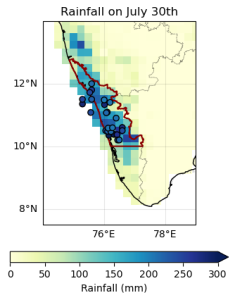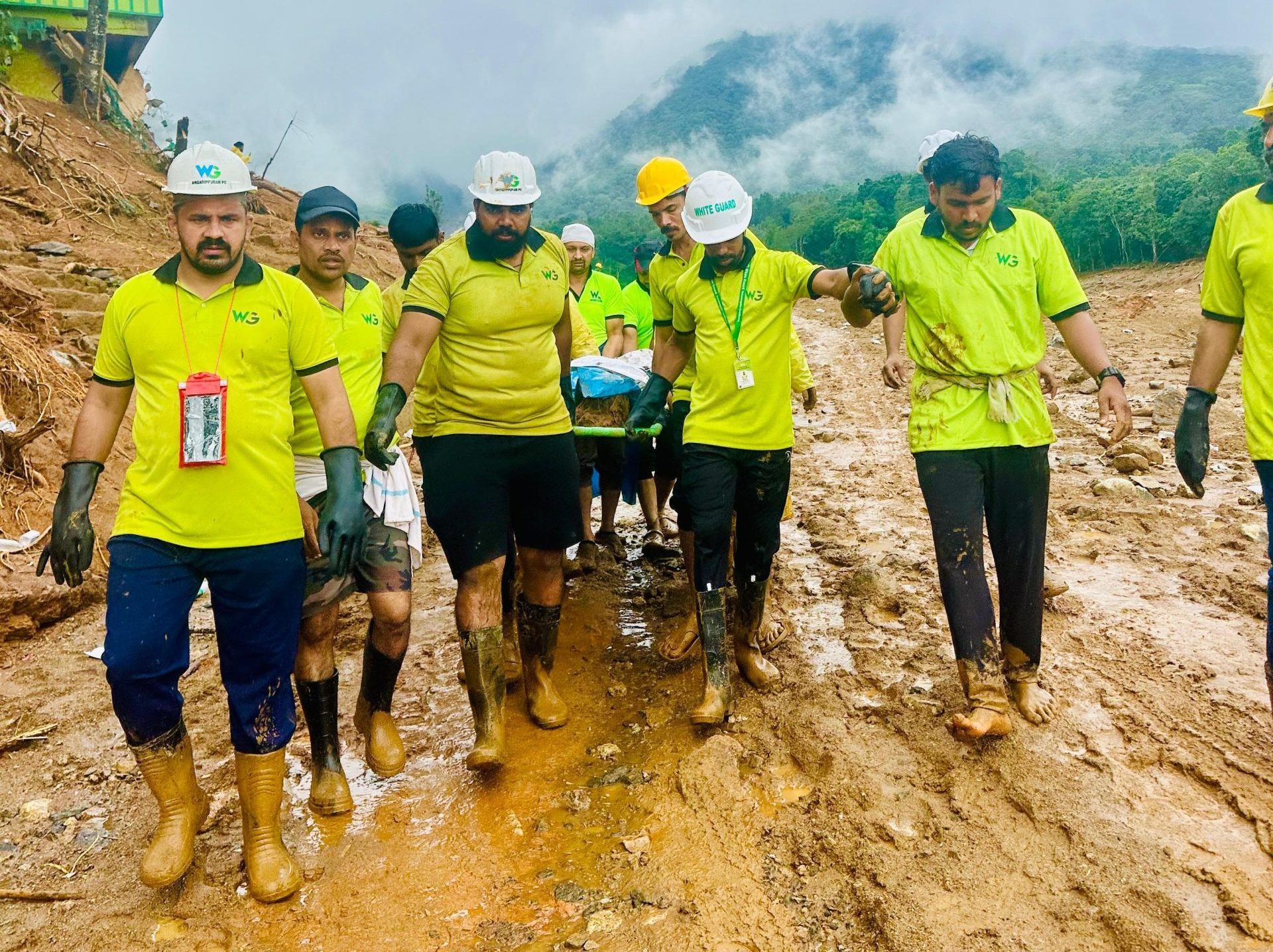Wayanad, a mountainous district in the Western Ghats, was the worst affected, however the heavy rainfall caused flooding across northern Kerala, washing away bridges, flooded homes and roads and led to power outages.
Researchers from India, Sweden, the United States, and the United Kingdom collaborated to assess to what extent human-induced climate change altered the likelihood and intensity of extreme rainfall that led to devastating landslides and floods.
The soils in Wayanad were highly saturated, which is common in the region during the rainy monsoon season, meaning the meteorological cause of the landslide was the heavy rainfall on the preceding day of the event. Wayanad has been determined to be the most susceptible district to landslides in Kerala (Sharma, Saharia & Ramana, 2024).
To characterise the event, we analyse the 1-day maximum rainfall (RX1day) during the monsoon season from June to September, focusing on a region of northern Kerala (red outline, figure1).

Main findings
- The Wayanad landslides resulted in devastating loss of life and occurred in a mountainous region with loose, erodible soils after 140mm of precipitation fell on saturated soils.
- In today’s climate, which is 1.3°C warmer than it would have been at the beginning of the industrial period, an event of this magnitude is expected to occur about once every 50 years. The event is the third heaviest 1-day rainfall event on record, with heavier spells in 2019 and in 1924, and surpasses the very heavy rainfall in 2018 that affected large regions of Kerala.
- To assess if human-induced climate change influenced the heavy rainfall, we first determine if there is a trend in the observations. Heavy one-day rainfall events have become about 17% more intense in the last 45 years, over a period when the climate has warmed by 0.85°C. Longer-term trends in the pre-satellite era are not clear, which may relate to lower quality weather data.
- To quantify the role of human-induced climate change we analyse climate models with high enough resolution to capture precipitation over the relatively small study region. Overall, the available climate models indicate a 10% increase in intensity. Under a future warming scenario where the global temperature is 2°C higher than pre-industrial levels, climate models predict even heavier 1-day rainfall events, with a further expected increase of about 4% in rainfall intensity.
- Given the small mountainous region with complex rainfall-climate dynamics, there is a high level of uncertainty in the model results. However, the increase in heavy one-day rainfall events is in line with a large and growing body of scientific evidence on extreme rainfall in a warming world, including in India, and the physical understanding that a warmer atmosphere can hold more moisture, leading to heavier downpours.
- While the extreme rainfall was well forecast by the Indian Meteorological Department (IMD) and warnings were issued, the information was at the state-level, making it difficult to discern which localities would be impacted by landslides (one of the potential impacts of heavy rainfall listed in the warning) and would therefore require evacuation. Slope-specific landslide early warning systems can be extremely costly and difficult to implement, but those would provide the best opportunity for effective early action. Given this, reducing exposure of people and assets to landslide-prone places may be a more effective strategy.
- While the linkage between land cover and land use changes and landslide risk in Wayanad is mixed in the limited existing studies, factors such as quarrying for building materials, and a 62% reduction in forest cover, may have contributed to the increased susceptibility of the slopes to landslides when the heavy rain fell.
- The increase in climate change-driven rainfall found in this study is likely to increase the potential number of landslides that could be triggered in the future, raising the need for adaptation actions that may include the reinforcement of susceptible slopes, landslide early warning systems, and construction of retaining structures to protect vulnerable localities.





